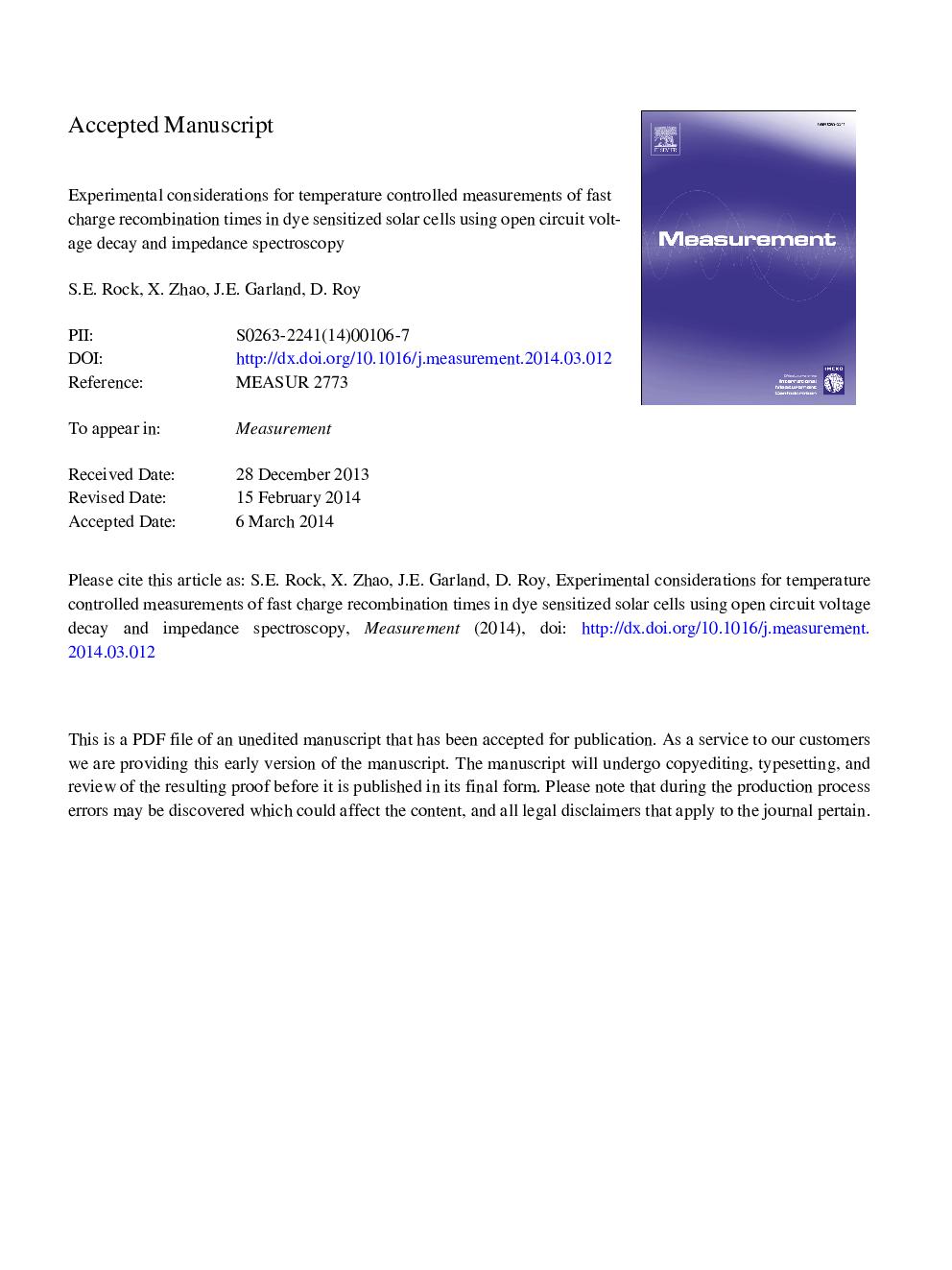| Article ID | Journal | Published Year | Pages | File Type |
|---|---|---|---|---|
| 7125215 | Measurement | 2014 | 45 Pages |
Abstract
Charge recombination at the electrolyte-photoanode interface of a dye sensitized solar cell (DSSC) is a major efficiency-limiting factor of the cell. To mitigate this recombination effect it is necessary to ensure that the effective electron lifetime in the DSSC is longer than the electron's transit time across the photoanode of mesoporous TiO2. While the efforts aimed at accomplishing this goal are often based on new materials/designs of photoanodes, a quantitative evaluation of these designs relies on the precision of the benchmarking measurements of electron lifetimes. The open circuit voltage decay (OCVD) technique offers an effective yet straightforward method for such measurements. The present work focuses on certain experimental criteria for ensuring the accuracy of these experiments, and probes the associated effects of temperature variations in the solar cell. The results demonstrate that, a high rate of data sampling is essential for adequately resolving the fast initial stages of charge recombination. The results also show the effects of nonlinear recombination where second order OCV variations are operative. The findings of the OCVD experiments are compared with a parallel set of tests carried out using impedance spectroscopy. The relative roles of the two sets of analytical measurements are examined.
Keywords
Related Topics
Physical Sciences and Engineering
Engineering
Control and Systems Engineering
Authors
S.E. Rock, X. Shi, J.E. Garland, D. Roy,
